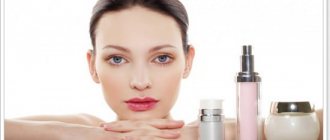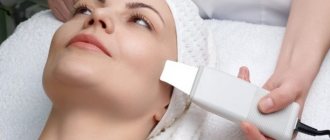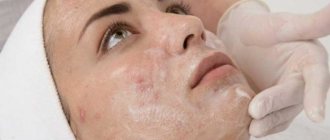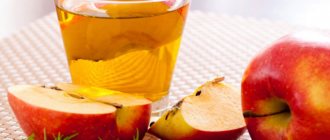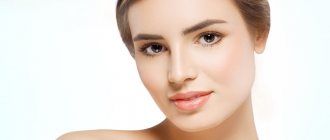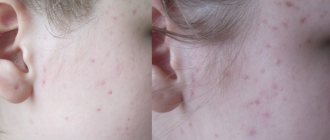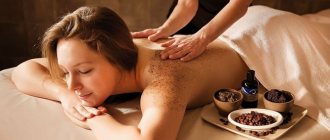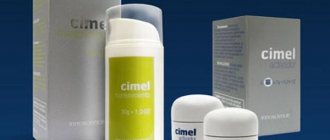Mechanical peeling is a popular procedure in cosmetology, which involves polishing the skin to make it clean and completely smooth. This is one of the options for exfoliation - the most common, but rather rough procedure. Mechanical peeling of the stratum corneum of the skin is performed manually or using a machine method. To increase the effectiveness of the procedure, natural abrasives are used, such as sea salt or sugar, ground coffee or seeds, powder made from sand, coral, or diamonds.
Types of mechanical peeling
Scrubbing is the simplest and, as a result, popular method of exfoliation. During the procedure, creams or gels containing silicone micro granules, crushed nuts and fruit seeds are used. In addition to professional exfoliating agents, natural ones are also used, consisting of honey or natural vegetable oils, sea salt, sugar, coffee grounds, crushed oatmeal. Such products are applied to pre-moistened skin, massaged for several minutes, and then washed off.
Peeling-gommage is a gentle exfoliation technique that combines some principles of mechanical as well as chemical exfoliation. The preparations used for this procedure contain enzymes or organic acids. On the surface of the skin, they soften its top layer and pores. After drying, the peeling gommage is rolled off, and the treated area is rinsed with slightly warm water.
Peeling-brushing is a mechanical-hardware exfoliation that involves the use of an electrical cosmetic device with various replaceable attachments - a brush, pumice stone, and a washcloth. The nozzle of the running device rotates, thus exfoliating the stratum corneum. The size and hardness of the brushes are selected individually, taking into account the type and specific characteristics of the skin, as well as the area of the procedure.
Dermaplaning is an innovative cosmetic procedure that was developed in Asia. The procedure is a little similar to shaving hair, but instead of a traditional razor, a special tool is used that is more like a scalpel. Dermaplaning for the face has several main goals, including removing the stratum corneum, getting rid of vellus hair, as well as small scars formed after acne.
Sandblasting dermabrasion is a variant of hardware exfoliation, during which exfoliation is carried out by the action of a stream of microscopic particles. Salt, soda, magnesia, and corundum powder can be used as abrasives. Microcrystals of these substances, released under a certain pressure, disrupt the integrity and remove stubborn dirt, as well as epithelial particles.
Fish peeling is a very exotic SPA procedure, including mechanical exfoliation techniques and elements of ichthyotherapy. During the procedure, the stratum corneum is not polished off, but is eaten by Garra rufa - small fish. Fish peeling is completely painless and was originally intended for the treatment of chronic diseases such as eczema and psoriasis. Nowadays, many spa centers and salons offer the procedure as a “fish” pedicure or manicure.
Mechanical peeling: absolute contraindications
1. Thin and sensitive skin, prone to rosacea. 2. Violation of skin integrity. 3. The presence of pustules, herpetic rashes or neoplasms. 4. Tendency to form keloids. 5. Psychosomatic disorders.
It is recommended to do this procedure no more than once every two weeks. To ensure effectiveness, exfoliation must be carried out in a course of six to ten procedures. The interval between courses should be from 4 to 12 months.
Preparing the skin for peeling and care after it
Before starting the procedure, you should completely remove makeup and wash with a gentle antiseptic foam. Upon completion of the procedure, apply a mask to the skin, and then cream or serum. For about seven days after the procedure, you should use a highly effective sunscreen before each time you leave the premises. And any cosmetic preparations containing retinol or alpha hydroxy acid should be replaced with products containing Aloe vera, witch hazel, chamomile, panthenol.
Almond peeling – professional superficial exfoliation of the skin with mandelic acid. This acid is made from bitter almonds and belongs to AHA. This procedure is gentle and is intended for highly effective cleansing, as well as exfoliation of dead epithelium of the stratum corneum.
Almond Exfoliation: Key Properties
This acid is characterized by a fairly large molecular weight and does not penetrate deeper than the vitreous layer of the skin. Acting exclusively on the surface of the skin, almond exfoliant perfectly loosens the stratum corneum, ensuring non-traumatic removal of its particles. This improves cellular respiration and the condition of the skin in general.
Almond acid is characterized by structural similarity with macrolides, due to which it temporarily stops the ability of pathogenic microorganisms to reproduce, preventing various inflammations. Acid from bitter almonds removes blockages in the hair follicles, eliminating the manifestations of seborrhea. It also has antioxidant properties such as binding heavy metals and blocking free radicals. In addition, such an acid promotes cell regeneration, as well as the synthesis of fibrillar protein.
Ultrasound in skin cleansing
Ultrasonic peeling is a type of hardware skin cleansing, as well as the ability to get rid of blackheads, comedones, pimples and frequent acne, whiten and refresh the face, correct wrinkles, scars and other skin imperfections. The procedure does not cause pain or burning sensations in the patient, and does not require long-term rehabilitation or special preparation of the skin for peeling.
Regular ultrasonic cleaning provides lasting, noticeable results without the risk of complications and deterioration of the skin. The technique is suitable for all skin types, including sensitive ones.
Another advantage of ultrasonic skin peeling is the delicacy of the effect on the skin. Ultrasonic waves destroy the connections between healthy and dead cells without compromising the integrity of the epidermis. At the same time, sound vibrations accompany the skin massage. This increases blood circulation, accelerates metabolic processes in epidermal cells, heals and strengthens the skin, and activates the production of natural collagen.
Skin perfection has become even closer! With home peeling devices, you will need no more than 30–40 minutes a week to look no worse than women who regularly visit beauty salons.
Types of Almond Exfoliation
Based on the base used, such products can be gel or hydroalcoholic. Gel ones are much gentler, and the degree of their penetration depends on the duration of exposure. Hydroalcoholic ones are applied in several layers, which significantly increases the effectiveness of exfoliation.
Existing products differ in the inclusion of an exfoliant - 10-60% almond acid. Weakly acidic preparations are intended for self-use at home. Professional preparations contain at least 25% of the active substance. The hydrogen status of these products is 1.5-1.9.
In addition to mandelic acid, these peels contain some other components. Thus, preparations with lactic acid gently exfoliate and perfectly moisturize the skin. Compositions with hydroxysuccinic acid enrich the skin with amino acids, this improves its tone and normalizes the function of the sebaceous glands. Almond peels with the addition of salicylic acid are quite effective in the fight against acne.
Advantages of almond peeling
1. Suitable for use in the décolleté area, as well as for hand skin care; 2. Can be carried out during periods of increased solar activity; 3. Does not provoke hyperemia and swelling; 4. Does not cause post-inflammatory hyperpigmentation; 5. Suitable for all skin types; 6. Indicated for patients, even with a reduced pain threshold; 7. It is considered a worthy alternative to retinoic or glycolic exfoliation.
Indications and absolute contraindications
Such exfoliation is indicated for enlarged pores, excessive function of the exocrine glands, acne, post-acne. The procedure is effective for folliculitis, rosacea, and hyperpigmentation that occurs under the influence of ultraviolet radiation. Helps cope with age-related changes such as atonicity, sagging, facial wrinkles. Indicated for imperfect skin texture and microcirculation disorders. Since bitter almond acid is characterized by pronounced bactericidal properties, exfoliation with its use is done in preparation for various cosmetic procedures.
Almond exfoliation is contraindicated in case of excessive tanning, high body temperature, exacerbation of herptic diseases, rashes and wounds in the affected area. Also, the procedure is not performed on pregnant or lactating women, or patients with allergies to the components of the composition.
Almond exfoliation: positive effects
1. Levels the terrain. 2. Makes skin tone more uniform and fresh. 3. Reduces the visibility of facial wrinkles. 4. Removes comedones and oily shine. 5. Reduces acne intensity. 6. Increases skin elasticity due to microcirculation in various layers of the skin.
Benefits of the procedure
After peeling, the face looks younger. © Getty Images
Every year the cycle of cell renewal increases. For example, at 20 years old it is 28 days, and by adulthood it almost doubles. Dead cells, accumulating layer by layer, inhibit all processes associated with renewal. The skin does not look at all as we would like, it becomes uneven, dull, gray. Peeling helps the epidermis to get rid of the unnecessary layer of cells. As a result, the face looks younger and fresher.
Features of care after the procedure
Even after the first almond exfoliation, the skin recovers very quickly, but despite this it still needs specific care, which consists of the most intense hydration, prevention of inflammatory processes, and protection from harmful influences. These problems are effectively combated by post-peel preparations, which are produced under the same brands as the peels themselves.
If hyperemia occurs as a result of the procedure, the skin should be treated with a moisturizing cosmetic. The day after exfoliation, you may feel tightness; creams or masks with seaweed extracts, Aloe vera, shea butter, lactate, as well as fibrillar and hyaluronic acids will help eliminate this problem. Before leaving the premises, it is recommended to use a highly effective sunscreen emulsion with a high level of protection.
Occasionally, after two or three days, slight peeling appears, which completely disappears on its own after a few days. If regeneration occurs too slowly, it is recommended to use cosmetics with shea butter, grape seed oil, evening primrose or currant oil. Panthenol, phospholipids and ceramides will also help to bring recovery closer. For complications in the form of skin rashes, the use of bactericidal ointments that stimulate regeneration and tissue trophism is indicated.
Thus, mandelic acid is characterized by numerous valuable properties: antioxidant, anti-inflammatory, comedonolytic, keratolytic, lifting, whitening. The procedure is indicated for all skin types and has a gentle effect at the level of the stratum corneum. And it is quite effective against acne, minor age-related changes, as well as hyperpigmentation.
Milk (lactone) peeling is a variant of chemical peeling, applied externally. An effective cosmetic procedure, the action of which is aimed at removing dead particles of the stratum corneum, as well as deep cleansing the skin with lactic acid. This procedure is suitable for patients under thirty years of age, with sensitive and dehydrated skin.
Expert advice
Elena Eliseeva, medical expert at Vichy, recommends carefully approaching the home peeling procedure:
“Choose products that suit your skin type.
When applying peeling, do not press too hard to avoid injury.
Pay special attention to the areas of the chin, nose and forehead.
After exfoliation, be sure to apply a moisturizer that suits your skin type. Don't forget about sun protection at any time of the year.
The optimal frequency of the procedure is 1-2 times a week.”
Milk peeling: beneficial properties
Lactate or lactic acid are called aliphatic hydroxy acids of the components of glucose breakdown. In the body, this component is involved in carbohydrate metabolic processes. The highest percentage of lactate is found in yogurt, cottage cheese, sauerkraut, and live beer. Professional cosmetologists use only purified lactic acid.
Lactate reduces the stratum corneum of the epidermis, making the patient's skin very soft and incredibly smooth. Penetrating into the exocrine glands, it destroys the formed “plugs” in their ducts, eliminates comedones, preventing their inflammation. The anti-inflammatory property of lactate is also due to the presence of lactathiones in its composition, which slow down the development of bacteria.
Lactonic acid causes a slight burn, which provokes renewal processes. As a result, the period of skin regeneration is reduced to four weeks, which is the physiological norm. The beneficial properties of lactate also include its ability to effectively moisturize the skin. As a component of NMF, it binds and correctly distributes moisture.
Lactic acid stimulates the production of ceramides and also strengthens the epidermal barrier. By activating the water-saving abilities of the dermis, it stimulates fibroblasts, thereby increasing the synthesis of hyaluronan. Lactate also has a whitening effect. Its effectiveness in the fight against age spots is based on the ability of the chemical agent to exfoliate.
It is worth noting that highly concentrated formulations act completely differently: lactic acid completely limits the activity of the tyrosinase enzyme, which is involved in the production of melanin.
Lactone peeling options
Lactate may be contained in preparations for professional as well as home use. However, the concentration of this active substance varies depending on the expected effect. In terms of acidity level, lactate peels come in low (up to 30%), medium (up to 50%), and high (up to 90%) concentrations. There are formulations with 10% inclusion of the active substance, which are used for diagnosing vascular pathologies, as well as preparing the skin for a peeling course.
Compositions based on lactic acid are used in some systems of aesthetic medicine. For example, Lactic peel 30% from TM Mesoestetic helps to cope with age-related skin changes, stretch marks, and rosacea. Lactic GelPeel from TM New Peel is used to increase hydration of hypersensitive, dehydrated skin prone to rosacea.
Advantages of peeling with lactic acid
1. Low level of photosensitivity. Lactone peeling is allowed for use in the warm season, provided that sunscreen emulsions are used. 2. Physiological. Lactonic acid is a natural compound in the human body. Thanks to this, the procedure has the most positive result. 3. Gentle effect. The procedure is characterized by comfort, absence of pain and does not require too long a recovery. 4. Wide range of use. Lactonic acid is used to exfoliate the skin of the face, neck and décolleté. 5. Hypoallergenic. Suitable for patients who are allergic to other peeling options.
Lactone peeling: indications
Peels based on lactic acid are highly effective in combating only initial skin changes. And they are indicated for patients under thirty years of age or in cases of combining the technique with other cosmetic procedures.
Lactone peeling is indicated in the following cases: 1. Dryness, decreased tone, sagging skin; 2. Pale, uneven complexion; 3. Tendency to acne; 4. The presence of minor facial wrinkles; 5. Irritation, peeling; 6. Superficial pigmentation; 7. Fresh stretch marks and scars; 8. Preparation for certain cosmetic surgeries.
Advantages and disadvantages
Mechanical peeling of the face or body has a number of advantages:
- You can independently determine the depth of impact.
- The procedure can be carried out both in the salon and at home.
- After just 1-2 sessions you can see significant results.
- High-quality cleansing of pores and their narrowing, elimination of blackheads, effective fight against acne.
- The ability to eliminate large and small peelings.
- The presence of a slight rejuvenating effect.
- Lack of a long rehabilitation period.
We recommend: Beauty at the tip of a needle: differences between mesotherapy and peeling. What's better?
However, there are some disadvantages:
- The procedure is quite traumatic.
- Mechanical peeling is ineffective in combating pigmentation and severe wrinkles.
- The procedure has a number of contraindications.
- The results after peeling are short-lived.
Reference! The main competitor to mechanical peeling is chemical peeling. To understand which option is best suited specifically for your case, consult with a specialist.
Contraindications and recommendations for use
Peeling is prohibited in case of individual lactate intolerance, diabetes mellitus, during pregnancy and lactation. It is also better to cancel the procedure if hair removal has recently been performed in the area affected by damage, rashes, herpes or on its surface.
Peeling at home is done with preparations with the lowest lactate content - up to 30%. If you are exfoliating for the first time, it is recommended to start with the minimum possible proportion of active ingredients. The concentration of the active substance can be increased when the patient's skin gets used to its effects. After peeling, slight peeling is sometimes observed, which is eliminated by post-peeling moisturizers. It is also recommended to use highly effective sunscreen emulsions, as well as avoid natural or artificial tanning for several weeks after the procedure.
Milk peeling: effectiveness
You should not expect a significant positive effect after the first procedure. To obtain a noticeable effect, you should complete a whole course - from 3 to 10 procedures, with a break between sessions of one to two weeks. What does lactone peeling do? Due to the effect of lactate, the skin tone becomes uniform, the visibility of wrinkles, pigmentation, scars, and spider veins decreases. Turgor, the quality of microcirculation, as well as the condition of the skin in general improves. Acid increases the sensitivity of the epidermis, facilitating the penetration of beneficial components of cosmetic preparations.
Thus, milk peeling is one of the methods of gentle skin cleansing, which is suitable for patients under thirty years of age who have very dry and sensitive skin. It is soft, physiological and hypoallergenic. You can carry out a course of lactone peeling only a few times a year.
Jessner peel or Hollywood peel is a variant of exfoliation that is carried out with a combination of active acids. The procedure is designed to improve the condition of the skin and rejuvenate it. In terms of depth of action, Hollywood peeling is considered moderate. Composition of Hollywood peeling and its properties
In the original version, the composition consists of three abrasives: 14% each of resorcinone, salicylic, and lactic acid. It was developed by Dr. Jessner for sailors as a publicly available antibacterial composition that limits the spread of various skin infections during fairly long voyages. Then, the created composition was used as an aftershave. Later it was found out that it not only effectively fights inflammation, accelerating the healing of skin damage, but also promotes its rejuvenation.
The active acids included in the composition effectively remove dead cells, thereby stimulating tissue respiration, ensuring evenness of the relief and skin tone. Once in the epidermis, lactic acid molecules concentrate and conserve moisture. As a result, tissue water balance is restored and turgor is increased. Salicylic acid prevents the spread of bacteria and reduces the activity of the endocrine glands. Resorcinone disinfects and whitens the skin.
Modified formulations with an additional formula are also available. One of them is the complex MesopeelJessnerModificado from TM Mesoestetic with salicylic, lactic, and citric acid. Thanks to the inclusion of various acids, peeling is highly effective on all skin types. Citric acid enhances the lightening, vasoprotective, and antioxidant effects of the composition. And its gentle effect is ensured by a gel base.
Jessner Peel Options
The effectiveness of Hollywood peeling greatly depends on the number of layers of solution applied. Considering this characteristic, such peeling can be: 1. Superficial. A single layer of the drug is applied to the patient’s skin, which is immediately washed off. This exfoliation option is considered gentle and can be done at home. With the help of a procedure acting at the level of the stratum corneum, the skin is lightened and its texture is improved. After peeling, it will peel off slightly for two to three weeks. And after this time it becomes moisturized, elastic and smooth. 2. Average. Consists of three layers, which are applied at five-minute intervals. After applying the last layer, leave it for no more than 2 minutes and rinse thoroughly. It takes about five days for the skin to recover. The main goal of the procedure is to eliminate spots, scars, and facial wrinkles. It is carried out exclusively by a cosmetologist. 3. Deep. This procedure is carried out in a salon, during which the cosmetologist applies an acid composition in four and sometimes five layers. This is the only way to achieve maximum lifting effect. At the same time, the patient feels tingling and burning. The specialist assesses the level of acid exposure by the frost effect: the formation of white areas on the patient’s skin, which become the result of protein coagulation. Regeneration after the procedure takes about ten days. Benefits of Hollywood peeling
1. The procedure is controlled and safe. After its implementation, pigmentation, scars or any other side effects do not appear. 2. Can be performed on any part of the body. 3. Using the technique, varying depths of penetration and effectiveness can be achieved. 4. The positive effect is noticeable after the first session. 5. Suitable for all skin types, in particular problem skin. 6. Penetrates evenly and causes quite strong peeling. 7. The recovery process is not long, even with minimal care.
Jessner peeling: indications and absolute contraindications
Hollywood exfoliation is recommended for enlarged pores, comedones, and excessive activity of the endocrine glands. The procedure eliminates acne, as well as spots left as a result of acne. It is also indicated for pigmentation, seborrhea, hyperkeratosis, scars, ingrown hair after depilation, as well as minor age-related changes.
Absolute contraindications to Jessner peeling are: 1. Pregnancy, lactation; 2. Warm season, sunburn; 3. Demodectic mange, rosacea, large birthmarks in the affected area; 4. Intolerance to the components of the composition; 5. Exacerbation of diseases, any violation of the integrity of the skin; 6. Oncology, chemotherapy; 7. Heat; 8. Taking systemic retinoids; 9. Endocrine or autoimmune diseases.
For dark-skinned patients, before the session it is necessary to test for absolute tolerance of the components used.
Effectiveness of Jessner Peel
A sufficient number of sessions to ensure a positive effect is determined by a cosmetologist on an individual basis. Often, three to eight sessions are required, once every six weeks. The first session is basic; in all subsequent sessions, specialists increase the number of layers applied. The maximum effect from the course of procedures is noticeable on days 7-10 and lasts up to six months. What benefits does Hollywood peeling provide?
1. Smoothing the skin, improving its color. 2. Elimination of excessive pigmentation, post-acne. 3. Reducing the number and depth of wrinkles. 4. Normalization of the function of the endocrine glands, narrowing of pores. 5. Restoring the water balance of the skin. 6. Lifting effect similar to mesotherapy.
Salon cleansing options
Among professional mechanical cleanings, procedures such as brossage, microdermabrasion, coral peeling, and dermabrasion have earned special attention and popularity among users. Let's look at some of them in detail.
Brossage or brushing
Brossage (brushing) is a type of superficial cleansing of the epidermis. The procedure is painless and will take up to 15 minutes. Using brushes and sponges of varying hardness, the cosmetologist removes dead cells and keratinized layers, performs a light massage that enhances blood circulation and intracellular processes.
Brossage will not eliminate deep wrinkles and age spots, but it can give the skin a healthy glow, remove blackheads, comedones and increase tissue elasticity. It is recommended to perform the procedure for a normal type of epidermis once a month, for a dry type - 2 times a month, and for an oily type, brushing is recommended every week.
Important! To avoid stretching of soft tissues, the cosmetologist controls the degree of pressure and speed of movements. All movements are light and performed strictly along massage lines.
Microdermabrasion
Microdermabrasion is a medium facial peel. This is an excellent alternative to acid and laser treatments, but the procedure is also safe and less traumatic.
The cleansing method was first proposed by the Italian physician Othello Ginebri back in the 80s. Today it is one of the most useful and popular salon procedures. Its essence is as follows: the integument is exposed to a flow of a mixture of air and aluminum oxide, magnesium, and other abrasives. Microcrystals destroy intercellular connections between weakened and dead cells, which then leave the skin using vacuum equipment.
One type of this cleaning method is diamond microdermabrasion. Crystals of diamond, the hardest carbon, are used as abrasive particles. The cleansing procedure is quick and does not cause severe pain. According to patient reviews, a slight tingling sensation is possible, nothing more.
The course of microdermabrasion is 5–8 procedures with an interval of 1–1.5 weeks. If the problem is deeper and more pronounced, the number of sessions can be increased to 20.
Dermabrasion
Dermabrasion affects the deep layers of the epidermis and is an excellent alternative to plastic surgery and laser intervention. The result is amazing; after dermabrasion, patients look 10–15 years younger.
The cosmetologist uses an abrasive cutter to remove, as if grinding, the surface layers of the skin. Particular attention is paid to problematic scars and wrinkles. The process of removing the upper layers of the epidermis is painful, so anesthesia is performed before cleaning.
After the procedure, a large wound is formed on the face, which requires special care. At the first stage of recovery, the patient is prescribed anti-inflammatory and painkillers. The rehabilitation period after dermabrasion is long and difficult, but the final result justifies it.
Restorative care
After the Hollywood peeling, it is strictly not recommended to peel off the resulting crusts or apply makeup for five or six days. You can't sunbathe or visit a solarium for a month. The next day after the procedure, the skin is irrigated with thermal water every few hours. You can start regular care on the third day. However, you should wash your face carefully, with slightly warm water with cleansing foam or a slightly acidic composition. Afterwards, apply panthenol-based ointment. For subsequent care, creams enriched with moisturizing components and antioxidants are suitable. Before leaving the room, use a highly effective sunscreen emulsion.
Thus, Hollywood peeling is a highly effective anti-aging, antibacterial and whitening procedure. According to the rules, it is carried out with a preparation from the same parts of resorcinone, lactic, and salicylic acid. Less commonly, the composition is enriched with citric or glycolic acid, and the lactic content also increases. Hollywood peeling is a moderate version of exfoliation, so the recovery period after it lasts no more than two weeks.
Surely you may still have questions that our VBG Cosmetic specialists will answer with great pleasure.
Contraindications
Despite the delicacy of the action, patients with the following body characteristics and health problems are not allowed to carry out ultrasonic cleaning:
- there are oncological tumors of various types;
- for mental disorders, exacerbation of chronic diseases;
- in case of presence of purulent rashes, irritation and inflammation in the treated area;
- there is rosacea, wounds, cuts, some skin diseases;
- for hypertension;
- have a pacemaker and problems with the cardiovascular system;
- at any stage of pregnancy.
It is not recommended to carry out ultrasonic peeling during menstruation or taking hormonal medications. Changed hormonal levels can affect the final result of the procedure.
If you cannot determine whether ultrasonic cleaning is allowed for you or not, consult a cosmetologist. Neglecting contraindications is dangerous by deepening skin problems and deteriorating the patient’s health.
What is diamond peeling and what skin problems does it solve?
Diamond peeling is one of the newest cosmetology procedures, but is already beginning to gain popularity among women seeking to maintain their beauty.
This type of peeling is also called “face resurfacing”, since the finest diamond dust thoroughly absorbs dirt from the pores and old cells of the upper layer of skin. Diamond peeling is performed in professional beauty salons and cannot be reproduced at home. The diamond peeling device has a number of attachments that differ in size, impact and, accordingly, purpose. Attachments are selected individually for each client of the salon, depending on the type of skin and the areas where grinding will be performed. Thus, the cheeks and chin are treated with larger nozzles, the skin near the eyes or behind the ears is treated with small and delicate nozzles. The power of the devices is determined by the size of the diamond chips applied to them. Peeling can be done not only for the face, but also for almost the entire body - only the attachments and duration of the procedure will differ.
Diamond dust is nothing more than tiny diamond crystals that have undergone laser processing. The peeling device is equipped with an exhaust system, thanks to which the dust generated during the skin grinding process gets inside the device itself. During the procedure, the vacuum generated by the traction force has a beneficial effect on the surface of the skin and prevents the appearance of edema. In addition, additional vacuum action improves blood circulation and promotes effective skin renewal.
Cleansing the skin in a “precious” way is optimal for those who want to smooth out fine wrinkles or solve some cosmetic imperfections on the face. More specifically, diamond peeling is very effective and useful for the following skin problems:
- scars and scars after acne treatment;
- fine wrinkles and slight sagging of the oval of the face;
- problematic oily skin with enlarged clogged pores;
- freckles, age spots;
- uneven skin surface;
- dull gray complexion;
Diamond peeling is the most comfortable method of dermabrasion (skin cleansing), due to the painlessness of the procedure and the absence of unpleasant sensations - only the touch of the attachments is noticeable during cosmetic manipulations. In addition, the method is absolutely hypoallergenic - no particles remain in the layers of the dermis, and the crystals themselves are not sprayed into the air, since everything is absorbed by the device.
There are no age restrictions for diamond peeling (except for very young girls - but their skin does not yet need the procedure). “Precious” polishing will benefit both young women 25-35 years old and older women.
Review of popular models
There are many brands of skin peeling equipment manufacturers on the market today. Everyone will be able to choose the device that is most suitable in design, power, functional features and cost. However, we will consider several of the most popular models for ultrasonic cleaning at home.
Gezatone HS 2307i
The Gezatone HS 2307i device is designed for professional skin care at home. The device promises deep cleansing, healing and rejuvenation of the face with proper, regular use. Does not require special preparation or training. Easy to use and cost around 5 thousand rubles.
The Gezatone HS 2307i model has 3 operating modes:
- Peeling is a mode of deep cleansing of the skin from dead cells, keratinized layers, sebaceous plugs and dust accumulations in the pores. Cleansing takes place without pain or further redness. After the procedure, the skin's sensitivity to nutritional components from facial care cosmetics increases. The skin “breathes”, the face looks refreshed, and a healthy glow appears.
- Lifting massage - sound vibrations delicately affect the epidermis, enhance the synthesis of collagen fibers, strengthen the integument at the cellular level, increase the circulation of lymph and blood in the inner layers of the skin. After such actions, a slight lifting effect is observed, the skin retains its natural firmness and elasticity.
- Phonophoresis is a mode of transporting nutritional and beneficial components deep into the integument. Under the influence of ultrasonic vibrations, important trace elements, minerals, vitamins and moisture particles penetrate into the epidermis, healing and strengthening the skin from the inside.
The use of these modes in home care will allow you to quickly eliminate visible disorders and prevent earlier withering of the integument. For maximum effectiveness, it is recommended to use a professional line of cosmetics during the peeling procedure, selected taking into account the type and characteristics of the client’s skin.
LW-006
The compact ultrasonic cleaning device LW-006 will become a real assistant in home skin care. The device is easy to use, and for greater convenience the manufacturer has equipped it with a small screen. It reflects the time, intensity of exposure, and the selected mode.
In total, LW-006 has 4 modes, which correspond to the buttons on the front panel:
- peeling;
- toning (tone);
- cleaning (clean);
- tightening or lifting (lift).
The model is very light, weighs only 200 grams, and is easy to use. The device comes with a handpiece (an attachment in the form of a flat spatula). The ultrasonic scrubber will please you with its affordable pricing policy. You can buy it for 3–4 thousand rubles. depending on the configuration.
BioSonic 2000 KUS-2K
Another model from the famous manufacturer Gezatone. The device is easy to use, does not injure the skin and does not cause complications or side effects. To increase the effectiveness of the ultrasonic cleansing procedure, it is recommended to use high-quality cosmetics from the professional segment. The products must be water-based; other bases prevent the rapid penetration of ultrasonic waves into the deeper layers of the epidermis.
The peculiarity of this model is the intensity regulator. There are 2 power modes that vary depending on the severity of the problem and the sensitivity of the area being treated.
The BioSonic 2000 KUS-2K package includes a portable device, charger and instructions for use. Before using the device, be sure to study the contraindications, peeling rules, and tips for use from the manufacturer.
The cost of equipment varies between 6.5–7.5 thousand rubles.
Note! At the beginning of 2020, the manufacturer Gezatone replaced this model with a more advanced BioSonic 800 ultrasonic skin cleansing device.
Price and clinics
Simple procedures - medium and superficial peeling of any form, performed in beauty salons. Deep dermabrasion is performed in specialized clinics. And the point here is not the complexity of the equipment, but the degree of trauma of the method: after deep dermabrasion, it is necessary to monitor the patient for 24 hours, which is impossible in a beauty salon.
The cost of mechanical peeling varies widely:
- microdermabrasion in a multidisciplinary clinic costs from 13,500 rubles;
- deep peeling using diamond-coated attachments is estimated at 20,000–30,450 rubles;
- ultrasonic peeling can cost from 2300 to 6500 rubles;
- Brossage is a much more affordable procedure and will cost 500–600 rubles;
- The price of gommage is determined rather by the cost of the material - from 180 to 350.
Features of rehabilitation
After diamond peeling, redness occurs on the face, and swelling may form. The skin becomes thin and susceptible to various damages
This imposes a number of restrictions that are important to adhere to during the recovery period. Until 1–2 weeks you cannot:
- sunbathing, being in direct sunlight, in the cold;
- subject the skin to other procedures with a high probability of tissue injury;
- use thick makeup products that require careful removal.
Microdermabrasion entails a short recovery period (2-3 days). The occurrence of side effects is minimal. Dermabrasion with attachments for deep cleaning requires longer rehabilitation (at least a week). Hyperemia and extensive swelling may persist on the face for up to 5–7 days.
The result of the intervention is noticeable immediately: the skin is clean, smooth, and pleasant to the touch. The positive effect develops up to 2–4 weeks. Achievements are stored for up to 3 months.
What is the essence of each of them?
- Mechanical peeling. Mechanical peelings include those facial cleansing procedures that many women do at home. But in a clinical setting, a specialist carries out them competently, with correctly selected abrasives.
- Scrubbing. A scrub with special abrasive microparticles (made of silicone, almond and apricot kernels) is applied to damp skin, gently massaged and rinsed off.
- Gommage. The skin is lubricated with a product containing acids of organic origin and left for some time. The acid acts on the upper layer of the dermis - softens it. Then the applied product is removed from the face, gently rolling it. Along with it, the keratinized layer of skin is also removed.
- Brossage. It involves the use of a device with replaceable brush attachments, the hardness and size of which can be selected individually. When applied to the skin, the brush removes the top layer.
- Microdermabrasion. Through a special apparatus, microparticles enter the skin under pressure, which effectively remove impurities, sebaceous plugs, and dead cells.
- Mechanical peeling is not recommended for thin, very sensitive, inflamed skin.
Complications after peeling
There are no systemic complications after THC peeling, unlike phenol peeling. Local complications when using TCA acid with a concentration of less than 30% are extremely rare and can be quite easily corrected. Millia, or small superficial epidermal cysts of white color, very often occur in the first 3-5 weeks after the procedure. They may go away on their own, or a light, superficial microcrystalline peel can be used to remove them.
Superficial purulent pustules may appear 2-3 weeks after peeling. Using antibiotic ointment usually resolves this problem quickly.
In our practice there has not been a single case of scar formation. However, in the literature there are rare reports of the development of hypertrophic scars after THC peeling. It is necessary to be aware of this risk and not to use medium peeling in patients prone to pathological scarring.
Our studies have shown that medial peeling does not lead to an increase in the number of telangiosis. However, due to the pronounced lightening of the skin, they become more visible during the first 3-4 months.
